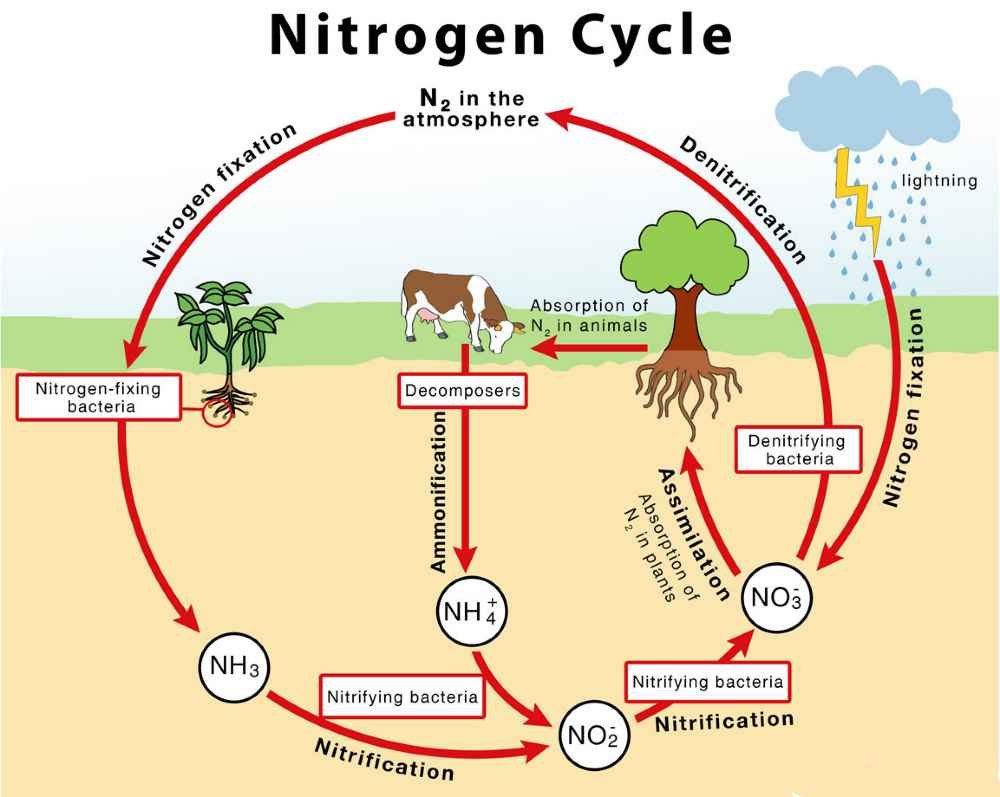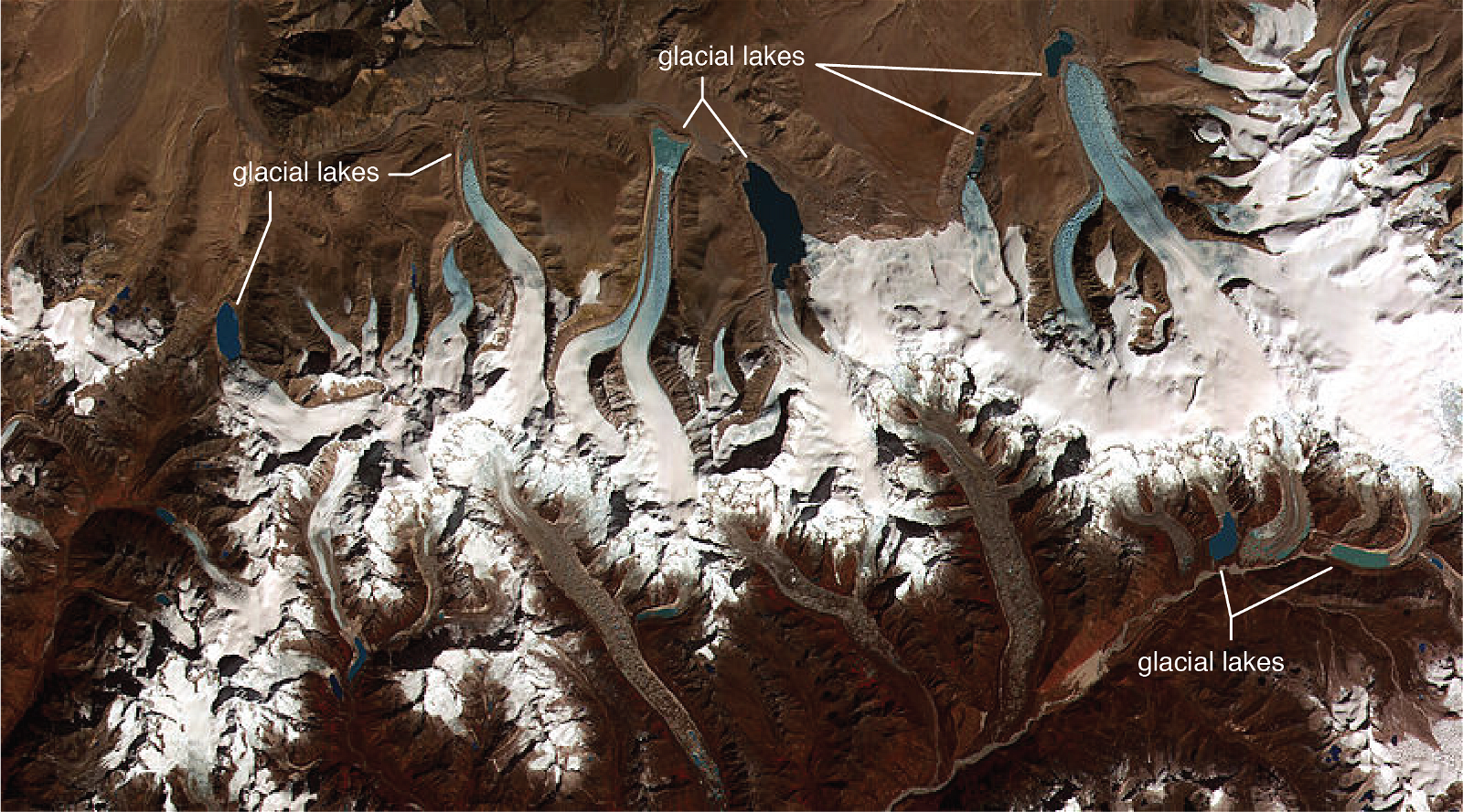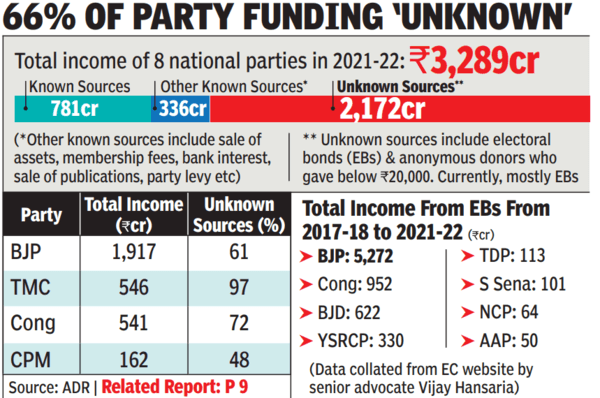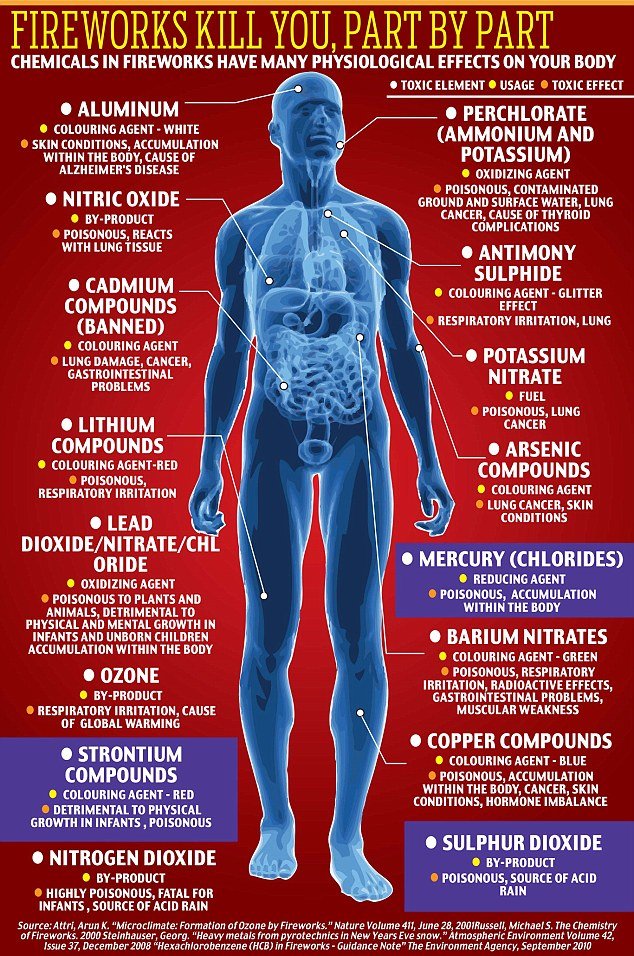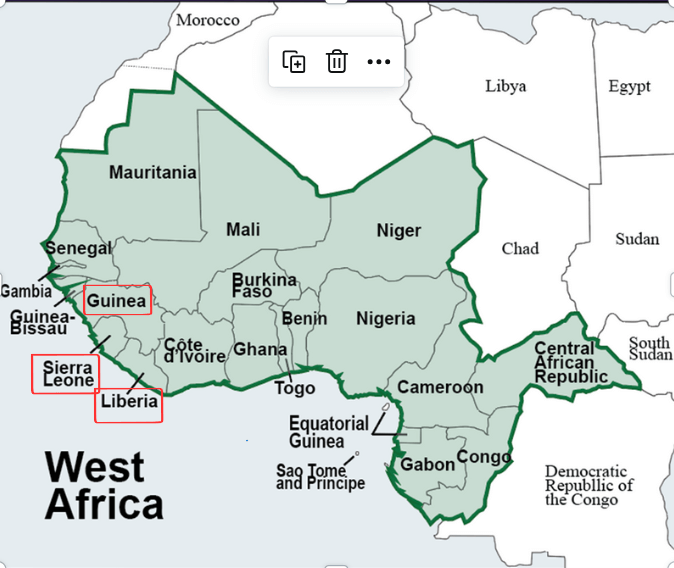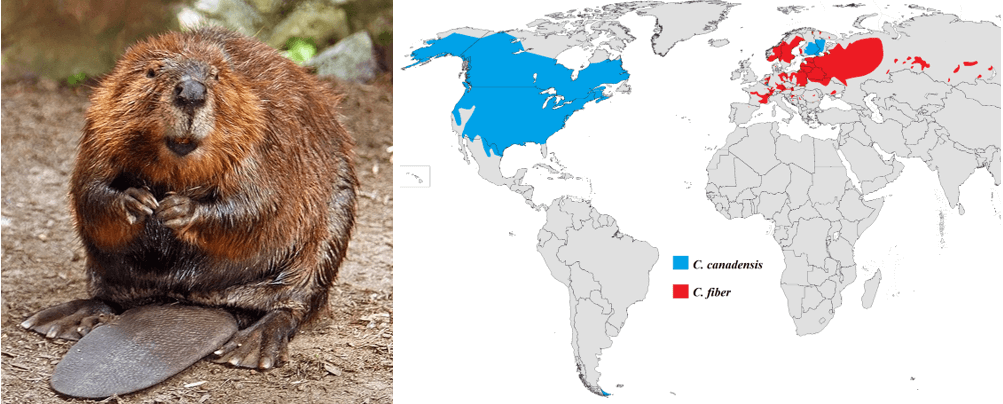
Current Affairs January 29, 2024: Oil Sands, Ladakh’s demand on Gilgit-Baltistan, All India Survey on Higher Education, Alabama Execution, Gallantry Awards, Padma Awards, Black Sea, Red Sea & Panama Canal, Alpine Ibex, Veer Gatha Project 3.0
Subscribers of "Current Affairs" course can Download Daily Current Affairs in PDF/DOC
Subscribe to Never Miss an Important Update! Assured Discounts on New Products!
Must Join PMF IAS Telegram Channel & PMF IAS History Telegram Channel
{GS1 – Geo – EG – Mineral Resources} Oil Sands
- Context (TH): Total gaseous organic carbon emissions from oil sands operations exceed industry-reported values by 1,900% to over 6,300% across the studied facilities.
- Oil sands (also called tar sands) are a mixture of sand, clay, water, and bitumen.
- The oil is in the form of bitumen, a very heavy liquid or sticky black solid with low melting temperature.
- Oil sand is a naturally occurring petrochemical that can be upgraded into crude oil and other petroleum products.
- It must be processed before it can be used by refineries to produce fuels such as gasoline and diesel.
- The largest deposits of tar sands in the world are found in Alberta (Canada) and Venezuela.
- Tar sands are mined in two ways:
- Open-pit mining: If tar sands are found near the surface, as in Alberta, Canada, they can be mined directly – much like open-pit coal mining – and then transferred to an extraction plant where the bitumen can be separated from the sand, clay, and water.
- In-situ mining: If tar sands are too deep to dig up, the bitumen can be extracted by injecting hot steam or solvents to loosen up the bitumen and allow it to flow through a well to the surface.
|
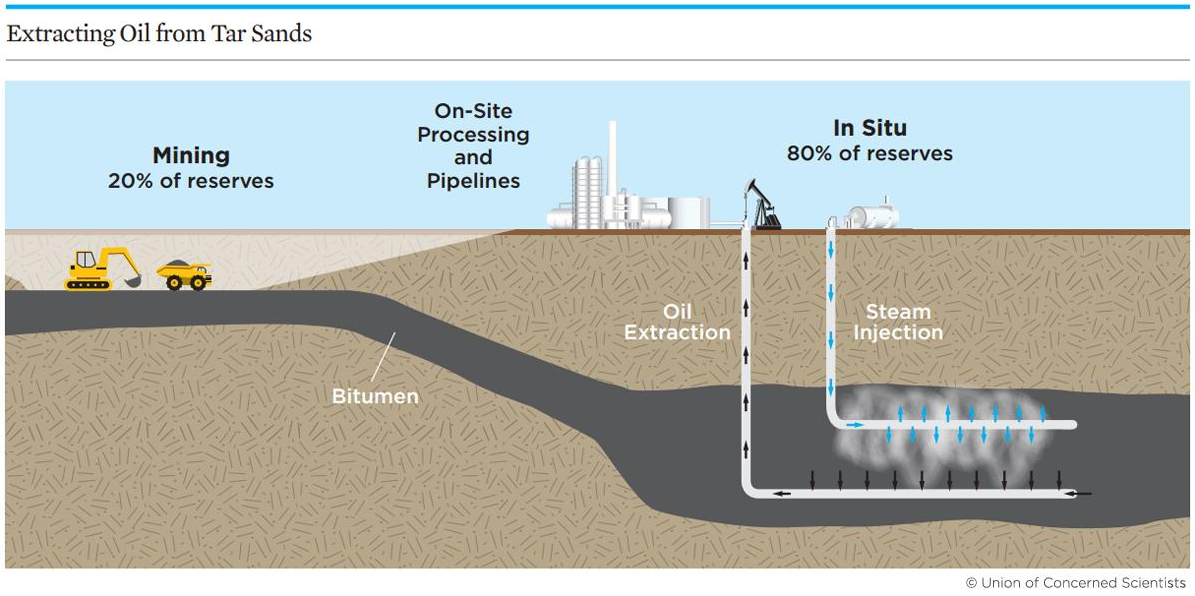
Harmful impacts of oil sands
- Tar sands extraction emits up to three times more global warming pollution than does producing the same quantity of conventional crude.
- It depletes and pollutes freshwater resources and creates giant ponds of toxic waste.
- Oil sands operations release pollutants into the air, including greenhouse gases and other harmful pollutants like NOx and SOx.
- Refining the oil sands produces petroleum coke, a hazardous by-product.
{GS2 – IR – India-Pakistan} Ladakh’s demand on Gilgit-Baltistan
- Context (TH): Ladakh local parties have presented certain demands to the Ministry of Home Affairs.
- These include extending the territorial control of Ladakh up to Gilgit-Baltistan in Pakistan-occupied Kashmir.
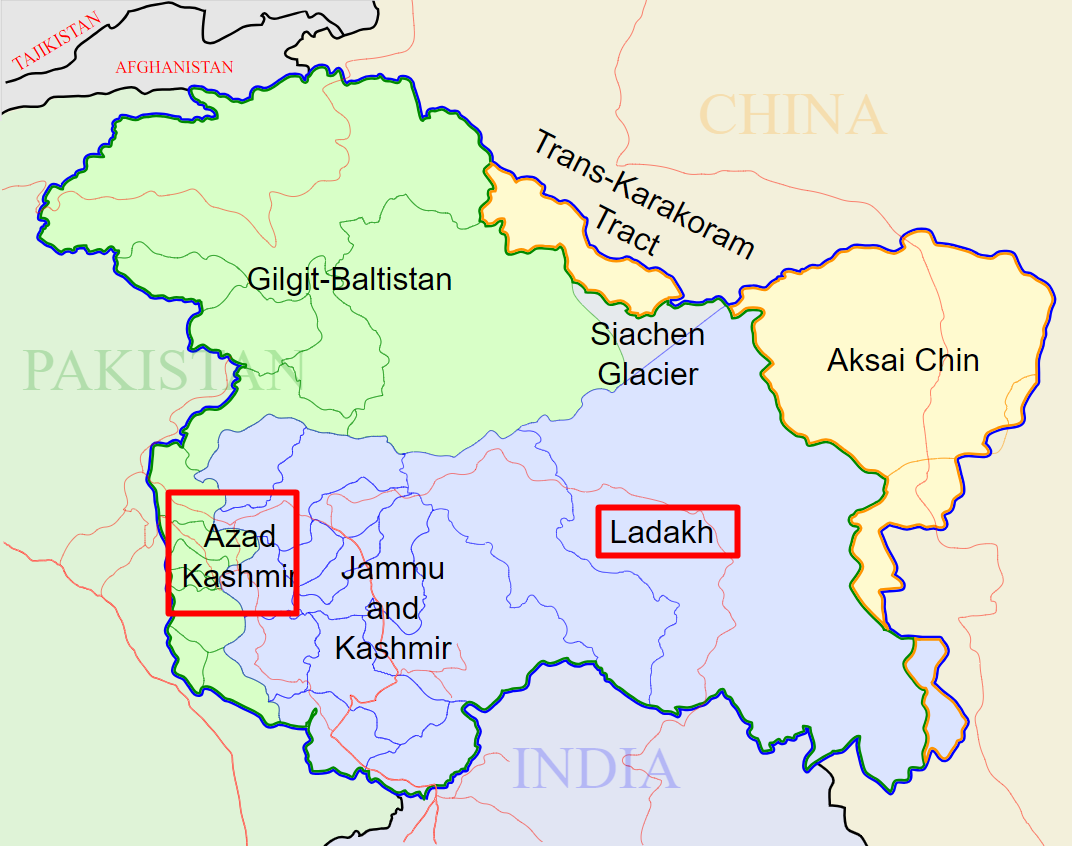
Current status of Ladakh
- Ladakh was a part of the Kashmir division of the erstwhile State of Jammu and Kashmir.
- It was carved out as one of the Union Territories, the other being Jammu and Kashmir.
- However, unlike the UT of J&K, Ladakh does not have a legislature.
- There are two elected hill councils, the Ladakh Autonomous Hill Development Council-Kargil (LAHDC) and LAHDC-Leh.
- Ladakh: Muslim-majority; Leh district: Buddhists; Kargil: Shia Muslims.
- For many decades, Leh supported the demand for UT status.
- However, after the events of 2019, Kargil has been insisting on reunification with Kashmir.
Latest demands of the region
- Demand of legislature: Campaigns for the restoration of Statehood with a legislature are being run.
- Special status: Application of the Sixth Schedule and Article 371 are also on the lines of Mizoram, Tripura, Sikkim and other northeastern States.
- People of Ladakh argue that opening the region to outsiders and outside investment will impact “the most ecologically fragile and sensitive areas.
- Ladakh also demands exclusive rights over recruitment and the constitution of the Ladakh Public Service Commission.
Extension of territorial control
- Prior to 1947, the Ladakh district also comprised the Gilgit-Baltistan area, which is now under Pakistan’s occupation.
- The memorandum highlights the fact and seeks an extension of territorial control up to Gilgit-Baltistan with “attempts to include this area into Ladakh”.
- It demanded the reservation of seats for Gilgit-Baltistan once a legislature was granted to the region.
- Memorandum also demands empowering the locals to foster stability to enhance the foreign policy.
Centre’s stand
- To discuss the demands, a committee under the Minister of State was constituted.
- Assurance of an appropriate solution to the issues related to language, culture and conservation of land in Ladakh was given.
- After the 2023 protests, a new 17-member committee, including the Ladakh Lieutenant Governor and members from the Kargil Democratic Alliance (KDA) and Leh Apex Body (LAB), was constituted.
{GS2 – Social Sector – Education} All India Survey on Higher Education
- Context (PIB | HT | TH | ET): The Ministry of Education released the All India Survey on Higher Education (AISHE) 2021-2022.
- The Ministry of Education has been conducting AISHE since 2011, covering all higher educational institutions located in India.
Key Findings of the Survey
Enrollments
| Particulars | Data of 2021-22 | Increase/decrease from 2014-15 |
| Total enrolment in higher education | 4.33 crore | Increase of 26.5% |
| Female enrolment in Higher Education | 2.07 crore | Increase of 32% |
| Total Student Enrolment in North-East States | 12.02 lakh | 9.36 lakh in 2014-15 |
| ST students’ enrolment | 27.1 lakh | Increase of 65.2% |
| OBC students’ enrolment | 1.63 crore | 1.13 crore in 2014-15 |
| SC students’ enrolment | 66.23 lakh | Increase of 44% |
| Gender Parity Index (GPI), (ratio of female GER to male GER)
GPI has continued to be above 1 since 2017-18, i.e., female GER continues to be more than male GER for the fifth consecutive year. |
1.01 |
Enrollment in Streams
- Among Disciplines at the undergraduate level, enrolment is highest in Arts (34.2 per cent), followed by science (14.8), Commerce (13.3) and Engineering and Technology (11.8).
- Among streams at postgraduate level, maximum students are enrolled in Social Science (21.1%) followed by Science (14.7).
- Government Universities constituting 58.6% of total Universities, contribute 73.7% of total enrolment, and Private Universities account for 26.3% of total enrolment.
Faculty
- Total number of faculty/teachers in 2021-22 is 15.98 lakh, of which about 56.6% are male and 43.4% are female.
- Female faculty/teachers have increased to 6.94 lakh in 2021-22 from 5.69 lakh in 2014-15 (an increase of 22 per cent since 2014-15).
- There is marginal betterment of females per 100 male faculty from 75 in 2020-21 to 77 in 2021-22.
Number of Institutions
- The total number of Universities/University level institutions registered is 1,168, Colleges- 45,473, and Standalone Institutions-12,002.
- In all, 341 Universities/University level institutions have been established since 2014-15.
- 17 Universities and 4,470 Colleges are exclusively for women.
{GS3 – Envi – Pollution} Nuclear Waste
- Context (TH): Researchers at the Bhabha Atomic Research Centre (BARC) in Mumbai studied 20 years of radiological data (2000-2020) from six nuclear power plants in India.
- They discovered that the radioactive releases and their possible impact on the environment have been very low. This information could support India to advancing its nuclear power program.
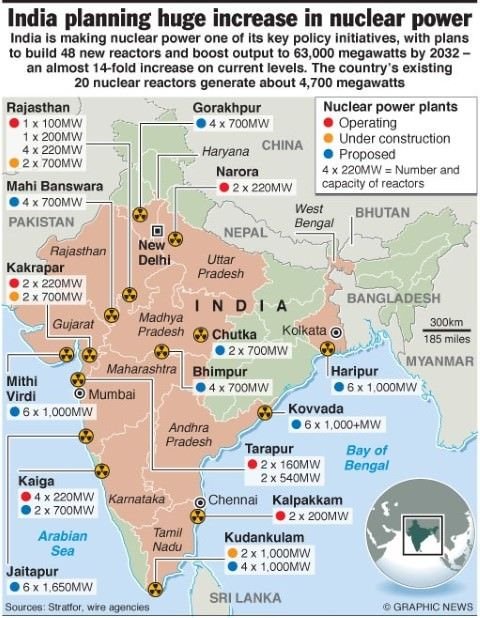
Nuclear Waste
- Radioactive (or nuclear) waste is a byproduct from nuclear reactors, fuel processing plants, hospitals and research facilities.
- It is also generated while decommissioning and dismantling nuclear reactors and other nuclear facilities.
- Nuclear Wastes: Argon 41, radioiodine, pcobalt-60, strontium-90, tritium and caesium-137.
- There are two broad classifications: high-level or low-level waste.
High-Level Waste
- It is primarily uranium fuel that has been used in a nuclear power reactor and is “spent,” or no longer efficient in producing electricity.
- The fission creates radioactive isotopes of lighter elements such as cesium-137 and strontium-90. These isotopes, called “fission products,”. It accounts for most of the heat and penetrating radiation in high-level waste.
- Some uranium atoms capture neutrons produced during fission. These atoms form heavier elements such as plutonium. It is known as “transuranic,” elements. They take much longer to decay.
Low-level waste
- It includes items that have become contaminated with radioactive material. For example, shoe covers and clothing, wiping rags, filters, etc.
- They are commonly disposed of in near-surface facilities rather than in a geologic repository. There is no intent to recover the waste once it has been disposed of.
How high level nuclear waste is managed in India?
|
{GS3 – S&T – BioTech} Death by Nitrogen: Alabama Execution
- Context (IE): Alabama carried out the first-ever execution using nitrogen gas in the United States.
The Method
- Inmates are forced to inhale the pure nitrogen using an Industrial level air respirator.
- This deprives the body of oxygen needed to maintain bodily functions and ultimately causes death.
- Normally, we inhale nitrogen as part of atmospheric air (78%) along with Oxygen.
- Nitrogen itself is not toxic, but asphyxiation due to the absence of Oxygen leads to death.
Claims of Painless Death
- It was claimed to be a humane, momentarily, and painless death.
- It was expected to cause unconsciousness within seconds and death within minutes.
- Agonal breath (struggle to breathe) is an involuntary reflexive action, as against said painful struggle.
A botched execution in real?
- Took 22 minutes against claims of seconds.
- No immediate unconsciousness led to violent shaking, deep breaths, eyes rolling back and struggles.
- Opposers see it as the “most inhumane” way of death.
- Little research and the “guinea pig” treatment of the convict raised severe ethical and legal questions.
Death penalty in the US
- Supporters lobby on the argument of retribution, justice for victims and deterrence for heinous crimes.
- Opponents prefer reformation, arguing the absence of data regarding deterrence.
Death Penalty: International Opinions
- The International Covenant on Civil and Political Rights (ICCPR) allows the death penalty but suggests abolition in its Second Optional Protocol to ICCPR (1989).
- UN Economic and Social Council-Safeguarding Rights (1984): It safeguards the rights of convicts facing the death penalty.
- Progressive Restriction (2007-2018) by UN General Assembly Resolutions: It requests members to limit the offences eligible for the death penalty and abide by international standards.
Nitrogen
|
{Prelims – Awards} Gallantry Awards for Military Personnel
- Context (TH): The President has sanctioned gallantry awards for 80 military personnel, including 12 posthumous honours, on the eve of India’s 75th Republic Day.
Gallantry Awards
- The Gallantry Awards are a series of honours established by the GoI to acknowledge acts of bravery and sacrifice by the Armed Forces, other officially recognized forces, and civilians.
- These awards are announced biannually on the occasions of Republic Day and Independence Day.
- The first set of awards, including the Param Vir Chakra, Maha Vir Chakra, and Vir Chakra, were instituted on January 26, 1950, but were retroactively effective from August 15, 1947.
- On January 4, 1952, additional gallantry awards, initially named Ashoka Chakra Class-I, Ashoka Chakra Class-II, and Ashoka Chakra Class-III, were introduced, also effective from August 15, 1947.
- These awards were later renamed in January 1967 to Ashoka Chakra, Kirti Chakra, and Shaurya Chakra, respectively.
Tatrakshak Medal (Coast Guard Medal)
- It is an Indian military decoration awarded for conspicuous devotion to duty or courage in the Indian Coast Guard.
- It is conferred annually by the President of India on Independence Day and Republic Day.
- Instituted in 1989 by the President of India, the first Tatrakshak Medal was awarded on January 26, 1990.
- All ranks of the Coast Guard are eligible for the award.
- The medal can be awarded posthumously and includes both meritorious service and gallantry.
{Prelims – Awards} Padma Awards
- Context (PIB | IE): Padma Awards for 2024 were announced. The list comprises 5 Padma Vibhushan, 17 Padma Bhushan and 110 Padma Shri Awards.
- The Padma Awards are one of the highest civilian honours of India.
- Padma Awards, which were instituted in the year 1954, is announced every year on the occasion of Republic Day except for brief interruption(s) during the years 1978 and 1979 and 1993 to 1997.
History
- The Government of India instituted two civilian awards-Bharat Ratna & Padma Vibhushan in 1954.
- The latter had three classes namely Pahela Varg, Dusra Varg and Tisra Varg.
- These were subsequently renamed as Padma Vibhushan, Padma Bhushan and Padma Shri vide Presidential Notification issued on January 8, 1955.
Categories
- The award is given in three categories, namely,
- Padma Vibhushan for exceptional and distinguished service;
- Padma Bhushan for distinguished service of a high order; and
- Padma Shri for distinguished service.

Eligibility
- All persons without distinction of race, occupation, position or sex are eligible for these awards.
- Government servants including those working with PSUs, except doctors and scientists, are not eligible for these Awards.
- The award is normally not conferred posthumously. However, in highly deserving cases, the Government could consider giving an award posthumously.
- A higher category of Padma award can be conferred on a person only where a period of at least five years has elapsed since conferment of the earlier Padma award. However, in highly deserving cases, a relaxation can be made by the Awards Committee.
- The nomination process is open to the public. Even self-nomination can be made.
Selection
- All nominations received for Padma Awards are placed before the Padma Awards Committee, which is constituted by the Prime Minister every year.
- The Padma Awards Committee is headed by the Cabinet Secretary.
- Recommendations of the committee are submitted to the PM and President for approval.
- The awards are presented by the President usually in the month of March/April every year where the awardees are presented a Sanad (certificate) signed by the President and a medallion.
- The total number of awards to be given in a year (excluding posthumous awards and to NRI/foreigners/OCIs) should not be more than 120.
- The award does not amount to a title and cannot be used as a suffix or prefix to the awardees’ name.
{Prelims – Envi – Species} Alpine Ibex
- Context (HT): Warmer temperatures caused by climate change are changing the lifestyles of mountain goats in the European Alps.
- The Alpine ibex, also known as the steinbock, is a species of goat that lives in the Alps of Europe.
- They are astonishing rock climbers.
Physical Characteristics
- The Alpine ibex has big horns, curved backward.
- The horns of females are a little shorter, subtler, and more curved, serving as a means of self-defense against predators.
- The coat of these animals is short and smooth, having different colors, depending on the season: in winter they are covered with a reddish-brown coat while in summer their coats become brownish-grey.
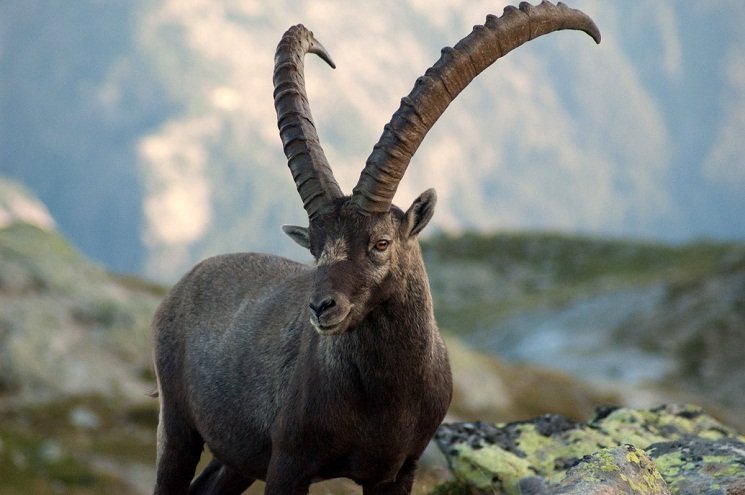
Diet
- Alpine ibex are herbivores (graminivores, folivores). They feed mainly on grasses, flowers, bushes, springs, and other plants.
Distribution
- Restricted once to the Gran Paradiso national park in northern Italy, in recent years it has recolonised most of the European Alps, and is found in Italy, France, Germany, Switzerland, Austria, & Slovenia.

Conservation Status
- IUCN Status: Least Concern
{Prelims – In News} Ima Keithel | Lotus Silk
- Context (OL): Manipur Tableau featured a women-run market, ‘Ima Keithel‘ and ‘Thambalgi Langla ‘(Lotus Threads), a lotus silk-making process.
- Manipur’s Tableau highlighted women’s role in socio-economic development.
- Some of Manipur’s globally acclaimed woven cloth made by women, including the Leirum Phi, Moirang Phi, and Mayek-Naibi, were also showcased. Two of them have GI tags.
Ima Keithel
- Manipur, the ‘Jewel of India’, is home to a one-of-a-kind 500-year-old market called ‘Ima Keithel’, which is located in Khwairamband Bazaar in Imphal.
- It is solely run and managed by women and is reportedly the world’s largest all-women market.
- ‘Ima Keithel’ literally means ‘Mother’s Market’.
- It stands as the world’s only market entirely managed by female traders, symbolising the strength of ‘nari shakti’ or women’s power.
- Around 5000-6000 women vendors operate here, offering diverse products.
- Male traders face penalties if found operating in the market.
- In February 2023, delegates of B20 from the G20 forum visited the Ima Market.
History
- The market was established in the 16th century following the imposition of the labour system, lallup-kaba in 1533 CE.
- The lallup-kaba was a forced labour system in the Manipur Kingdom that required male members of the Meitei ethnicity to work in distant lands or to serve in the army.
- As a consequence, women had to support their households by cultivating their fields or weaving textiles and then selling the products on improvised markets.
‘Thambalgi Langla ‘(Lotus Threads)
- Bijiyashanti Tongbram from Thanga village, located in the heart of Loktak Lake, recently became India’s first lotus silk producer.
- Her achievements earned her the prestigious ‘Changemaker of the Northeast 2020’ award.
- Lotus silk is considered a highly exclusive fibre.
- Lotus silk is counted as one of the finest fabrics produced in the country. This has established India as the world’s fourth-largest exporter of lotus silk.
- The top three countries are Myanmar, Cambodia and Vietnam.
- The lotus thread is similar to that of muga silk, and the only difference lies in the strength. Muga silk is stronger than lotus.
- The finished products are as good as silk.
- As the lotus thread is delicate, traditional handlooms are used instead of machines.
Loktak lake
|
{Prelims – In News} PM Young Achievers’ Scholarship Award Scheme for a Vibrant India
- Context (PIB): PM YASASVI is a scholarship program for students from Other Backward Classes (OBC), Economically Backward Classes (EBC), and Denotified Nomadic Tribes (DNT).
- The program offers Pre-Matric and Post-Matric Scholarships and facilitates top-class school and college education.
- It aims to facilitate high-quality education and address the financial challenges that often hinder educational progress for students from OBC, EBC, and DNT communities.
- Applications for the Top Class School Education and Top Class College Education schemes can be made through the National Scholarship Portal until January 31, 2024.
{Prelims – In News} Veer Gatha Project 3.0
- Context (PIB): Defence Minister felicitated ‘Super-100’ winners of Project Veer Gatha 3.0.
- The Veer Gatha Project is a collaborative effort of the Ministries of Defence and Education.
- The project aims to raise awareness among children about the bravery of Indian soldiers.
- Students are encouraged to engage in various activities such as writing poems and essays, creating paintings, and making multimedia presentations about medal-winning heroes.
- Each winner receives Rs 10,000, a medal, and a certificate.
{Prelims – PIN} Black Sea, Red Sea & Panama Canal
- Context (DTE): The United Nations Conference on Trade and Development (UNCTAD) expressed concern over increasing disruptions in global trade caused by the impact of climate change and war on shipping in three key sea lanes: The Black Sea, the Red Sea and the Panama Canal.
Black Sea

- Countries surrounding Black Sea: Ukraine to the north, Russia to the northeast, Georgia to the east, Turkey to the south, Bulgaria to the southwest, and Romania to the west.
- Issue: The Russia-Ukraine war has disrupted the trade stability in the region.
Red Sea
- Surrounding Countries: Egypt, Saudi Arabia, Yemen, Sudan, Eritrea and Djibouti.
- Mediterranean Sea -> Sinai Peninsula, Gulf of Aqaba, Gulf of Suez -> Suez Canal -> Red Sea -> Bab el Mandeb Strait and the Gulf of Aden -> Indian Ocean
- Issue: Houthi attacks

Panama Canal
- Atlantic oceans -> Isthmus of Panama -> Pacific oceans
- It lies within Panama.
- Issue: Drought
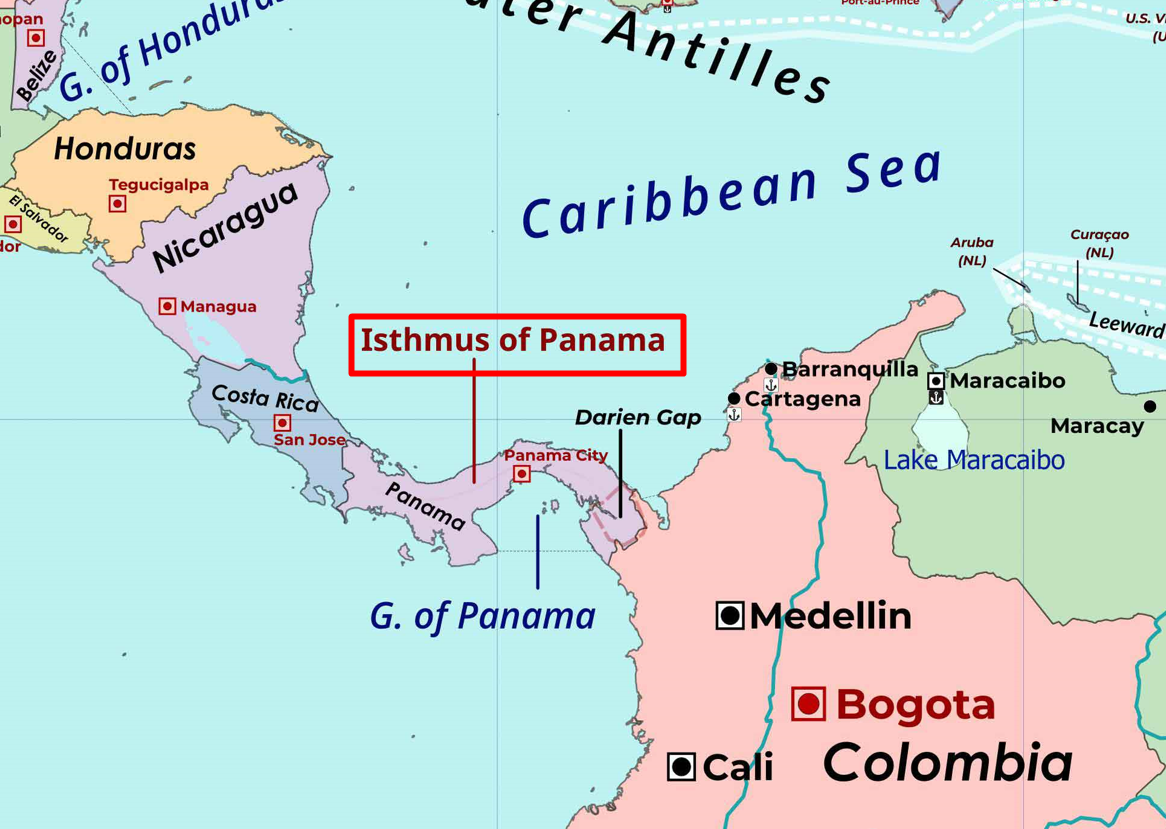
{Prelims – Sci – Bio – Diseases} Western Equine Encephalitis Virus
- Context (TH): Recently, Argentina informed the WHO about a person who contracted the Western Equine Encephalitis Virus (WEEV).
Western Equine Encephalitis Virus
- It is a rare mosquito-borne infection.
- Transmission is through the bites of infected mosquitoes, which act as vectors.
- It belongs to the genus Alphavirus of the Togaviridae family.
- The main reservoir hosts the viruses is passerine birds.
- In humans, the WEE virus can cause diseases such as meningitis and encephalitis.
- The virus can spread to other areas through infected birds or even through the movement of people.





![PMF IAS Environment for UPSC 2022-23 [paperback] PMF IAS [Nov 30, 2021]…](https://pmfias.b-cdn.net/wp-content/uploads/2024/04/pmfiasenvironmentforupsc2022-23paperbackpmfiasnov302021.jpg)
